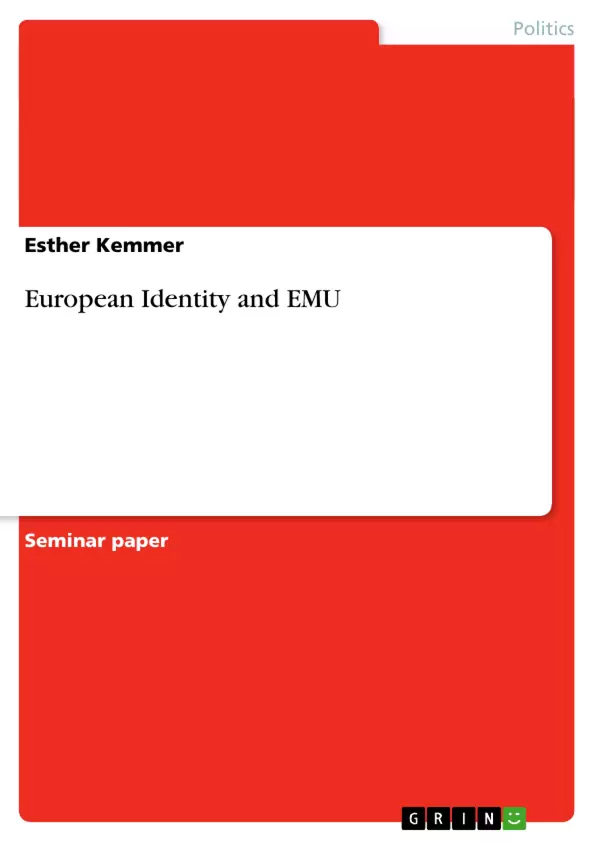Europe is coming closer together, this is shown in many parts of daily life. It is often argued that money is one of the best-known and most effective tools in symbolising the “united Europe”, the EU. Most of the member states of the European Union who matched the criteria of the Growth and Stability Pact seem to have agreed to this and joined the Economic and Monetary Union (EMU) as soon as it was introduced. But why were there some who decided not to exchange their national currency in favour for the common European one? Did they not feel an affinity with other Europeans? Did they not see that all Europeans are part of a community which is trying to express its unity through a common currency? Or did they not view the Euro ideologically, but rationally? And if they did what does this tell us about their European Identity? In short, is it necessary to join the Economic and Monetary Union to be a European? This article tries to answer these questions by looking for reasons why Denmark, The United Kingdom and Sweden decided not to accept the Euro, in particular looking for similarities, and their relation to the development of a single European Identity.
[...]
Inhaltsverzeichnis (Table of Contents)
- Introduction
- Why did Denmark, The United Kingdom and Sweden decide not to accept the Euro?
- The History of the Three Nations and their Relationship to the EU
- The Role of Referendums in the Decision not to Join the EMU
- National Identity and the European Currency
- The UK's Position on the Euro and the Five Treasury Tests
- Sweden and Denmark: A Similar Trend?
- Conclusion
Zielsetzung und Themenschwerpunkte (Objectives and Key Themes)
This article analyzes the reasons behind Denmark, the United Kingdom, and Sweden's decisions to not join the Economic and Monetary Union (EMU). It explores the potential impact of these decisions on the development of a European identity and the broader implications for the European Union.
- National Identity and the Role of Currency
- The Influence of Historical Relationships and Geographic Location
- The Impact of Referendums on European Integration
- The Relationship between Economic Interests and European Identity
- The Challenges of Building a Shared European Identity
Zusammenfassung der Kapitel (Chapter Summaries)
The article begins by examining the historical context of Denmark, the United Kingdom, and Sweden's relationship with the European Union. It highlights their unique position as countries that did not join the European Community (EC) at its founding. The article explores how their historical ties to other regions, such as the Scandinavian Community or the United States, contributed to their independent stances on European integration.
The text then delves into the significance of referendums in the decision-making process regarding EMU membership. It argues that the public's rejection of the Euro in Denmark and Sweden reflects a deeper concern about the perceived interference of supranational institutions in national affairs.
The article further examines the connection between national identity and currency, suggesting that the reluctance to embrace the Euro stems from a lack of a strong shared European identity. This section explores the importance of national currency as a symbol of historical heritage and cultural identity.
Finally, the article focuses on the UK's approach to EMU membership, highlighting the government's focus on economic considerations. It examines the "five tests" framework developed by the Treasury Studies to assess the economic viability of joining the Euro. The article concludes by analyzing the government's efforts to build a "pro-European" consensus through economic reform and highlighting the potential impact of these efforts on the development of a European identity.
Schlüsselwörter (Keywords)
The article delves into key concepts such as European identity, national identity, currency, economic integration, referendums, supranational institutions, the Economic and Monetary Union (EMU), the European Union (EU), and the role of history and geography in shaping national attitudes towards European integration.
- Citation du texte
- Esther Kemmer (Auteur), 2004, European Identity and EMU, Munich, GRIN Verlag, https://www.grin.com/document/37591



